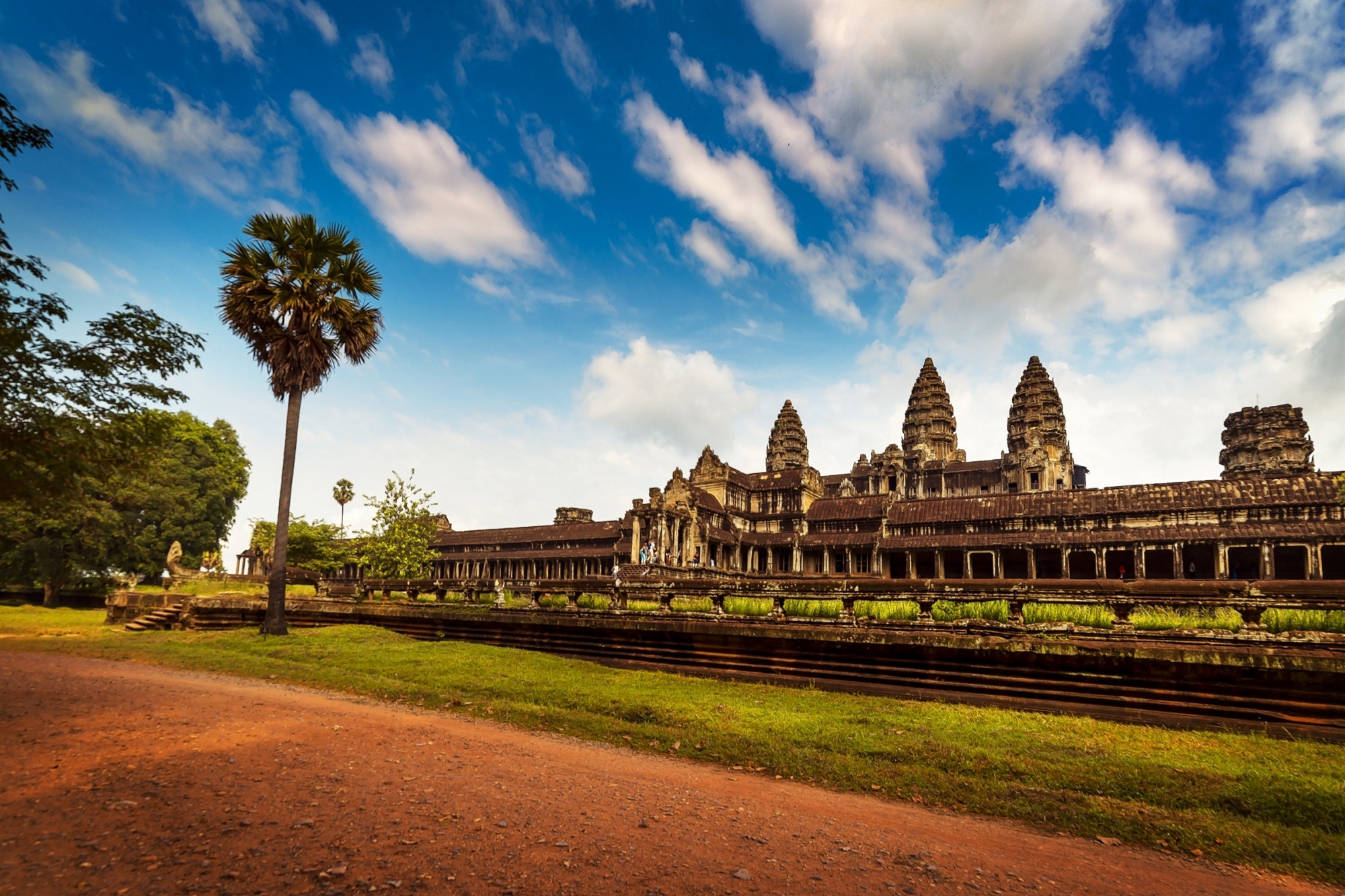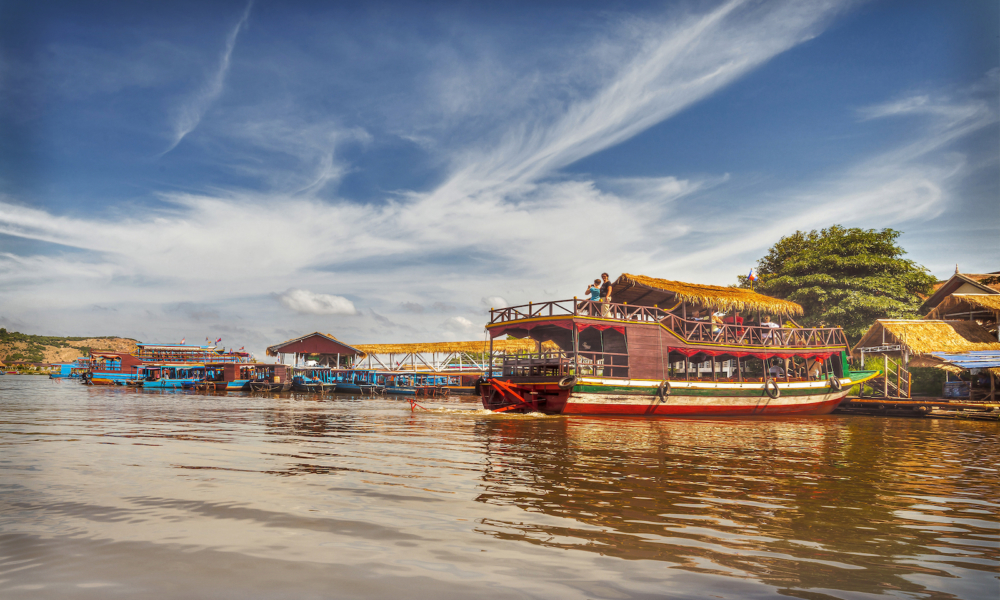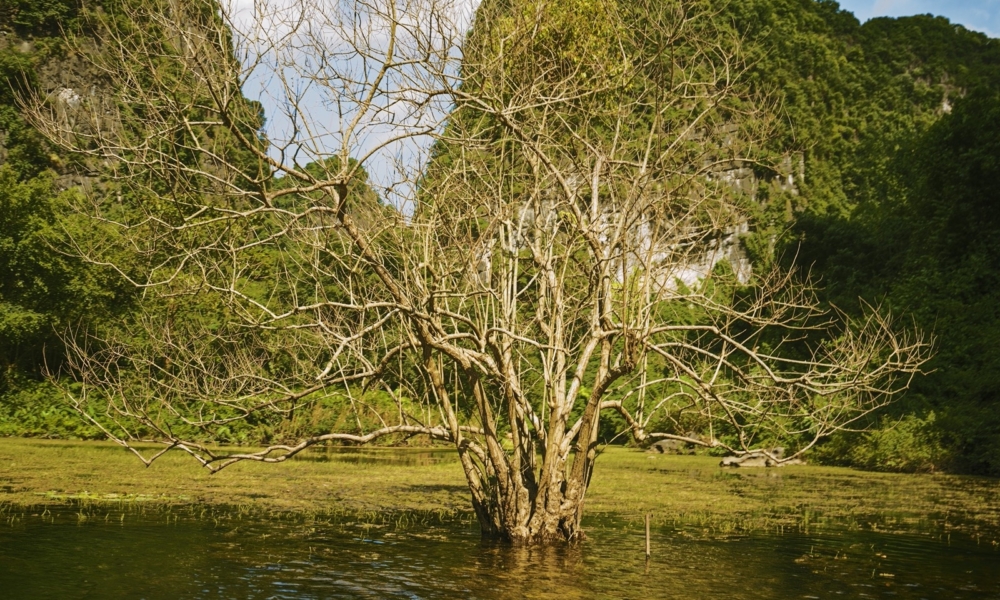Distance from the Eastern shores of south India to Seam Reap in Cambodia is about 1600 miles across the Indian Ocean. In the past, while most of mainland Indians were prevented from sea crossings by strong religious taboos, the South Indian seafarers did not share this superstition. So from around 200BC, they had been regularly crossing the Indian ocean, spreading Hindu Religion and culture to Thailand, Indonesia, Malay Peninsula, Cambodia, and Vietnam.
The peoples of Southeast Asia had migrated from southern China sometime between 2500 and 1500 BC. They were influenced by these Indian traders, proselytizers, and merchants. The Indian influence gradually spread among them and many Hindu kingdoms were set up in these countries.
Both Hinduism and Buddhism originated in India and spread to these states from India, directly or via China. For many centuries both faiths co-existed and tolerated each other. While Buddhism was reduced to a minority by the 12th century in India, the opposite happened in southeast Asia. In Cambodia for instance, Hinduism had virtually disappeared by the 14th century!
Along with the Hindu religion, creations such as vast temple complexes fell into disuse and ruin. Magnificent temples were swallowed by verdant jungles to disappear from sight. Our tale today is about one such vanished kingdom that remained hidden for some four and half centuries until the French explorer, Francois Mouhot rediscovered it in 1860.
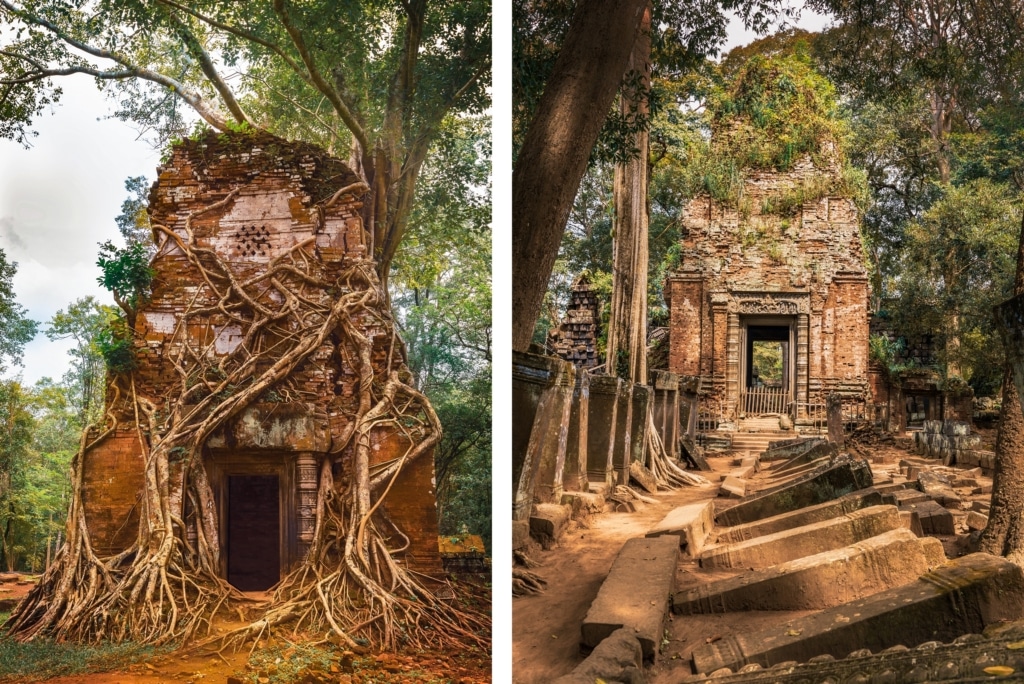
Rise
During the 1st to the 9th century, the rise of Hindu kingdoms in Cambodia began with the Funan and Chenla kingdoms that followed each other. Then came the Khmers in the 9th century, founded probably a Hindu Brahmin from India who married a princess of a local tribe called the Naga people. A fanciful version used later in Cambodian ballet is based on a romantic affair between the queen of the Apsaras (heavenly Nymphs) named Mera and a Cambodian king named Kambu whose progeny became the Khmers, the name was derived from Kambu and Mera.
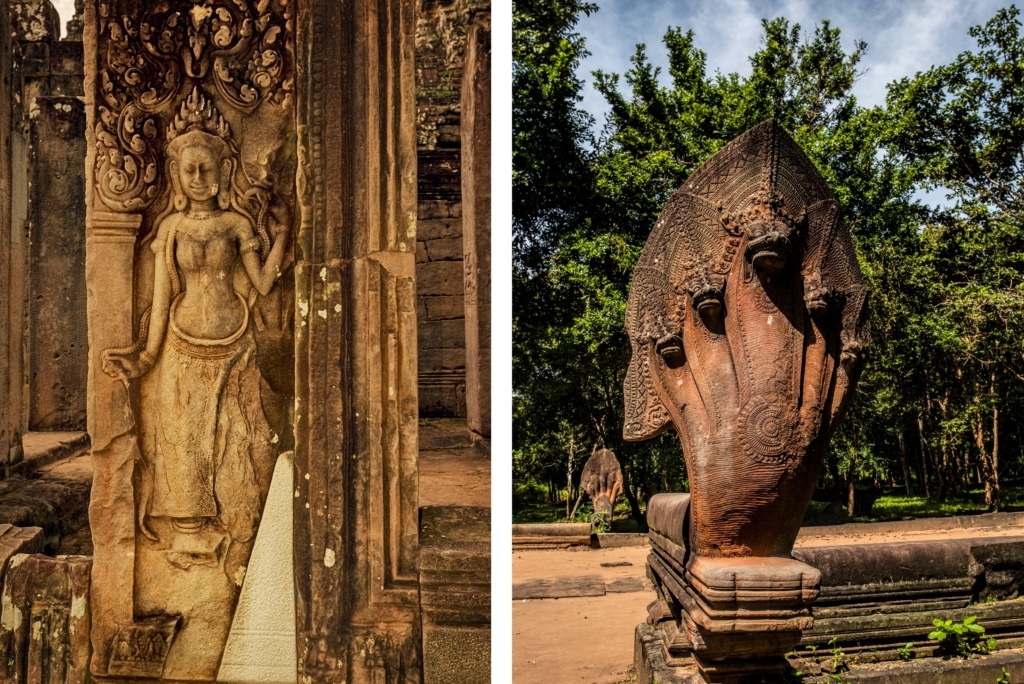
The Khmer empire reached its peak in the 11th century under King Suryavarman II who was a formidable warrior. He avenged earlier attacks on the Khmers by the kingdom of Champa (present-day Vietnam) and also attacks by Northern and Southern Thailand.
However, he is really remembered for the construction of what is still the largest religious structure of the world and one of the most beautiful, the Angkor complex. The Angkor Wat temple is its centerpiece.
Angkor Wat
Representing the abode of Hinduism's ancient gods, the spectacular temple of Angkor Wat is quite literally heaven on earth and the jewel in the Khmer archaeological crown. It is the largest of all Angkor's temples and one of the best preserved. Surrounded by a huge rectangular reservoir and an outer wall over 3km in length, the temple had three-tiered galleries and five towers shaped like lotus buds. Such is the Cambodian national pride in the site that the outline of the temple is on Cambodia's national flag. The sheer scale and symmetry of Angkor Wat, a perfect blend of artistic genius and spiritual devotion, is breathtaking.Fig -3 Angkor Wat
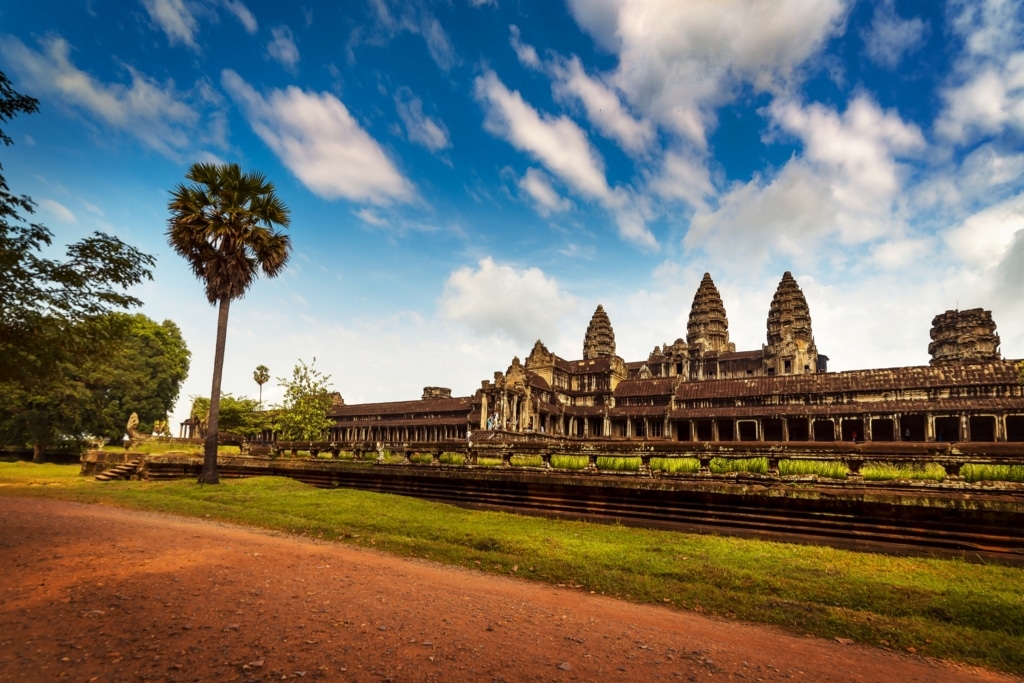
Angkor Wat is also famous for its bas-reliefs and stone carvings showing scenes from the Hindu epics. Many pillars and walls are decorated with carvings of Apsaras (heavenly nymphs) and Devas (Hindu deities).
The temple is dedicated to the Hindu god Vishnu. It also has bas-reliefs of the builder, King Suryavarman II holding court. The elegance of the carvings and the temple's reflection in the surrounding moats is awe-inspiring.
Bayon
One of the most iconic temples in Angkor is Bayon. Colossal stone faces serenely smile down from 54 gothic towers that rise out from the upper terrace. By the time of its building, the Khmer kings had embraced Buddhism. So, the faces are of Avalokitesvara, the Bodhisattva of compassion, instead of a Hindu god. It is said that the faces look very much like that of King Jayavarman VII, the builder of this temple. Ah! Vanity!
Bayon stands in dense jungle with no outer wall. It was some time before researchers discovered that it is at the center of the city of Angkor Thom, the last Khmer capital in the Angkor region before it moved to Phnom Penh.
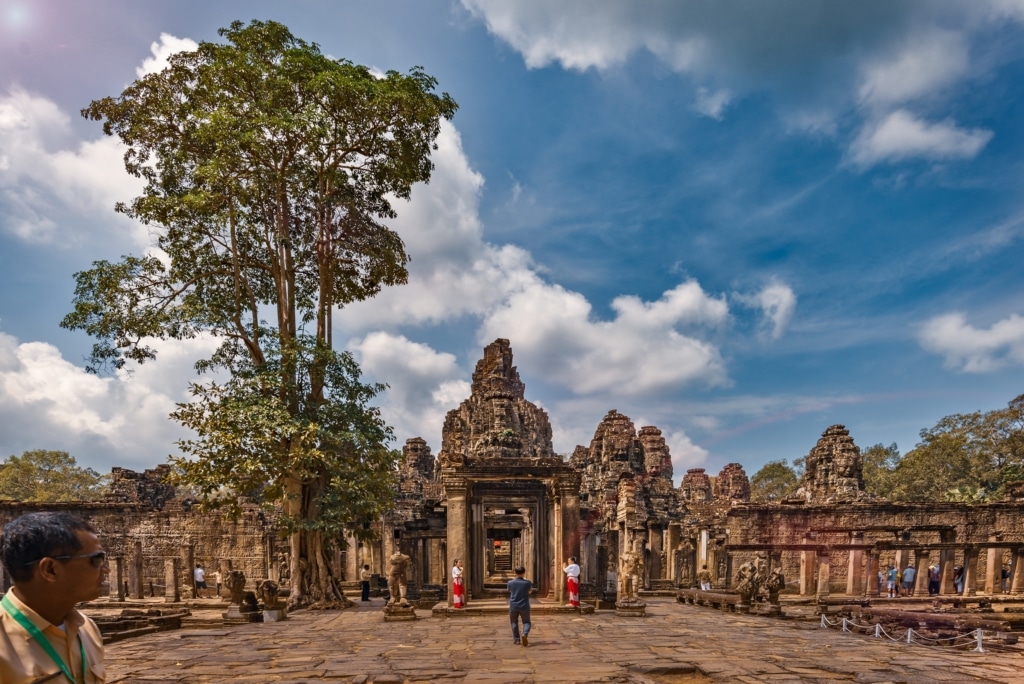
Ta Prohm
The most photographed temple in all of Angkor is the Buddhist temple of Ta Prohm. It lies semi-ruined and engulfed by the jungle. Roots of towering trees spill over the ramparts like the tentacles of a gigantic octopus. As towers crumble beneath the weight and walls are split by tree limbs, it's easy to imagine how nature triumphed over man's creation. See Fig 1, The Jungle Reclaims Man's Creation.
Beneath the foliage and carpets of moss are stone reliefs of goddesses and meditating monks. Some corridors are blocked by fallen masonry and much of the temple is shrouded in darkness by tree limbs and leaves. Much of Ta Prohm's history is known from a Sanskrit stone inscription.
Angkor Thom
The monumental Angkor Thom was the last great capital of the Khmer empire. At its zenith, the city had a population of one million. Measuring more than 10 square km in size, the fortified city had eight meter high walls and a massive moat to keep invaders at bay. Inside there were residences for priests, royal and military officials.
Within the city's enclosure stands Angkor Thom's most important monuments, including the temples of Bayon, Baphuon and Phimeanakas - a three-tiered temple with had a golden spire, lost today. Angkor Thom also housed the Royal Enclosure and the Terrace of Elephants - a giant viewing stand with five piers.
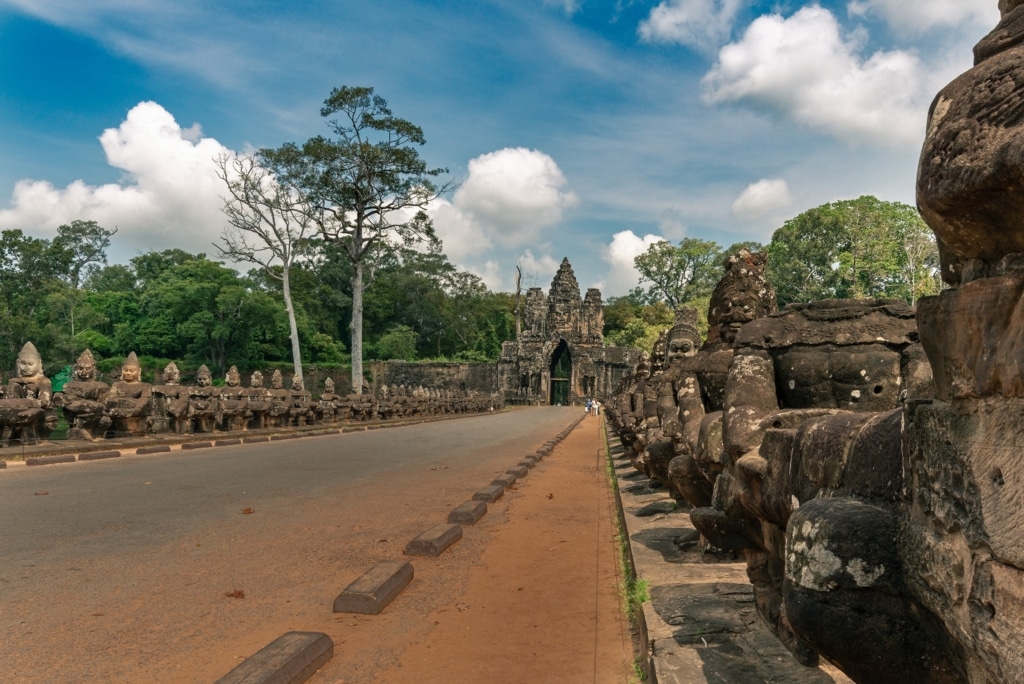
The best way to visit Angkor Thom is through the south gate along the causeway flanked by 54 massive statues of gods and an equal number of demons. The monumental statues represent "The Churning of the primordial ocean" a popular Hindu legend of the search for the elixir of immortality.
Fall
So what caused the fall of the crown jewel of the Angkor kingdom and why was the entire Angkor complex abandoned? There were two main reasons. Firstly, the effort required to build the vast Angkor complex drained the energy of the Khmer. Some 300,000 people had toiled for 30 years. shifting as many sandstone blocks as used in Khafre's pyramid, the 2nd largest in Giza, Egypt. The Khmers built a complex covering 350 square miles and over a hundred temples in addition to outer walls, moats, and reservoirs filled with water - and they were exhausted!
Their preoccupation resulted in a neglect of the canals and reservoirs so that successive droughts destroyed agriculture around the Angkor complex. Alternative trade routes opened, minimizing Angkor's income from trade and the two factors forced the Khmer kings to shift their capital to Phnom Penh around 1450. Finally, the complex was sacked by the Thais and jungle took over the land.
Vanishing & Rediscovery
Overgrown by the verdant green jungle, the glory that was the Angkor complex slowly disappeared from sight. While a few Buddhist monks continued to pray in some parts of Angkor, much was abandoned and trees took root that initially destroyed the structures, and then as if repentance, held the masonry together with their roots and trunks.
During the French occupation of Indo-China, the explorer Francois Mouhot rediscovered the Angkor complex in 1860. The full extent of the temple complex was gradually revealed through aerial surveys and many more wonders came to light.
The lost kingdom had been found again! Today, the complex is a world heritage site and the pride of Cambodia.

